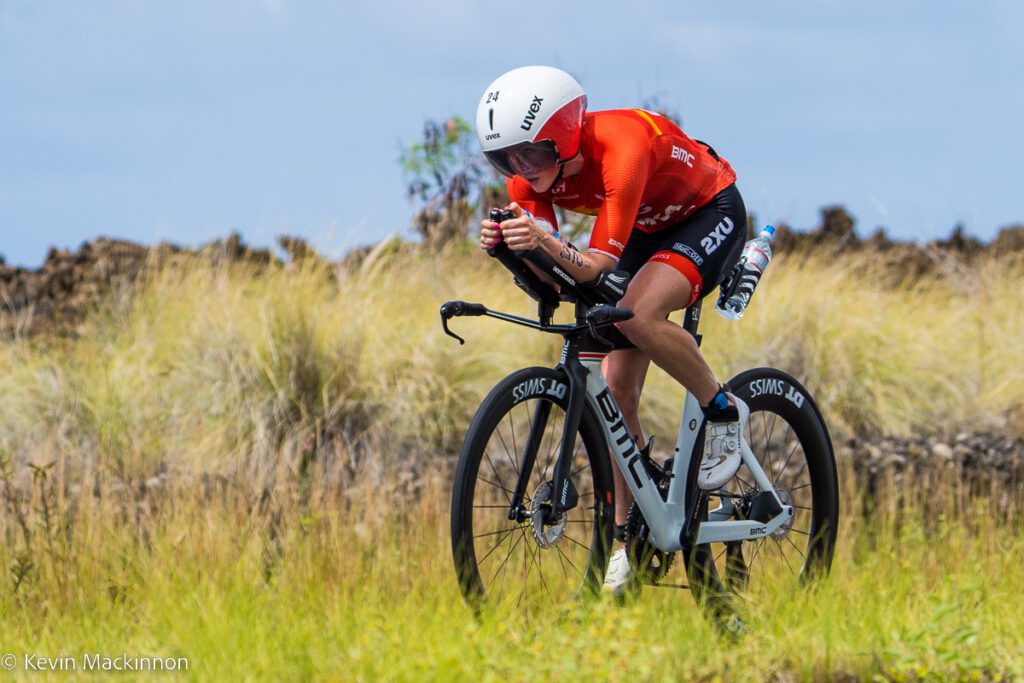2022 Game changer: Ironman world champion Chelsea Sodaro uses her new-found platform to push for change in sport
The surprise Kona winner is making a difference as a champion for women in sports
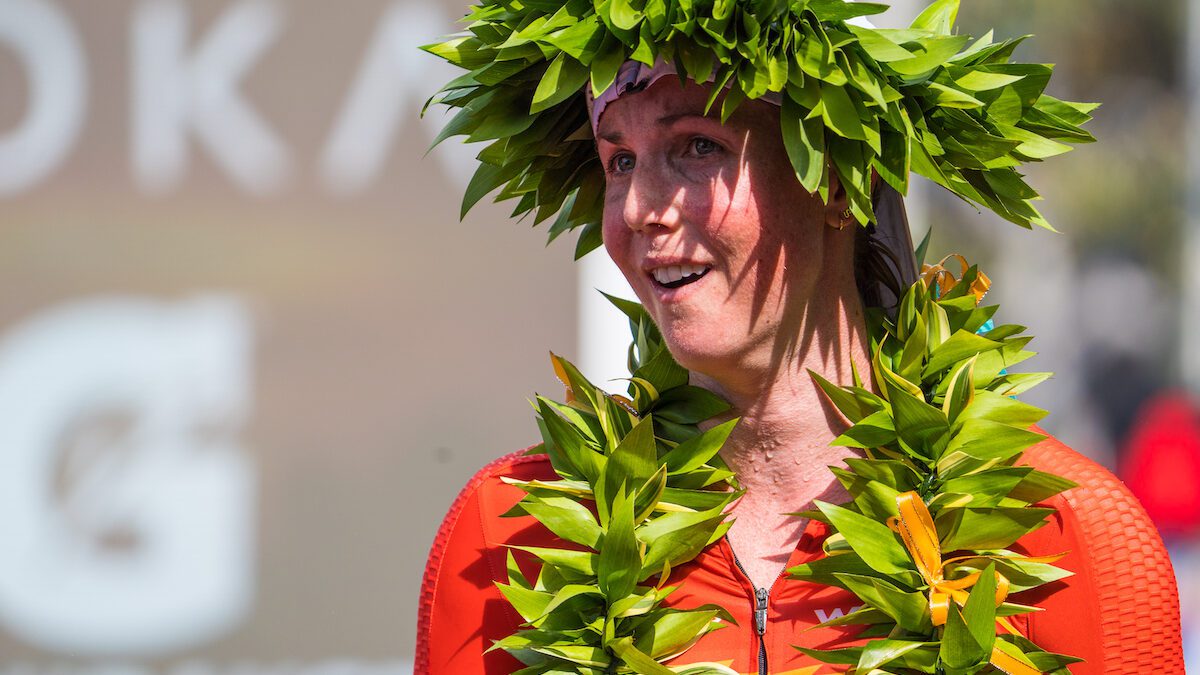 Photo by:
Kevin Mackinnon
Photo by:
Kevin Mackinnon
It’s October 21st, and there’s a buzz in the Sodaro home in Reno, Nevada.
A few days prior, 33-year-old professional triathlete Chelsea Sodaro had returned home from Kona after her surprise win at the Ironman World Championship, the first American woman to take the Kona throne in more than two decades.
But that wasn’t the fuss today. Another triumph had just taken place on a throne of a different sort. Nineteen-month-old daughter Skylar had just peed in the toilet for the first time.
“We’re really stoked. I’m starting to get this vision of not having to change diapers and it seems amazing,” Sodaro said. During the interview for this article, Sodaro’s husband Steve called from work, wanting to hear the play-by-play.
After a punishing training block leading up to Kona, Sodaro is happy to be back home, watching her daughter learn and develop in real time; happy to have a couple months of rest, and allowing herself to savor being a homebody before looking towards her 2023 racing season as a newly minted world champion.
The Speech
After raising the winner’s tape at Kona, Sodaro immediately embraced husband Steven and daughter Skylar at the finish line: in her Kona debut, she reached the high step on the podium, a mere 18-months after giving birth to her first child.
At the awards ceremony, Sodaro delivered the speech of a lifetime from the stage. Dedicating herself as a champion for women in sports, she said, “We need support throughout all the phases of our careers, whether we choose motherhood or not.”
The response has been entirely positive, with cheers of solidarity from current and former pro triathletes to age-groupers.
“It’s been really special to hear from moms and women in general, and I think that a lot of people in our community felt heard,” Sodaro said. “Maybe some people that have not felt super accepted, or like they had a place in our sport, now think ‘maybe there’s room for me,’ or [feel] empowered to carve some time out for themselves to chase their own athletic goals—or whatever goals they have outside of family and work.”
“Endurance sports, especially at the level I compete at, can be such a selfish pursuit – so much of our lives revolve around me,” she continued. “It feels really good to contribute. You wonder when you are just swimming, biking and running for a living how much you are really doing for the world. I feel privileged to have a platform to make a difference.”
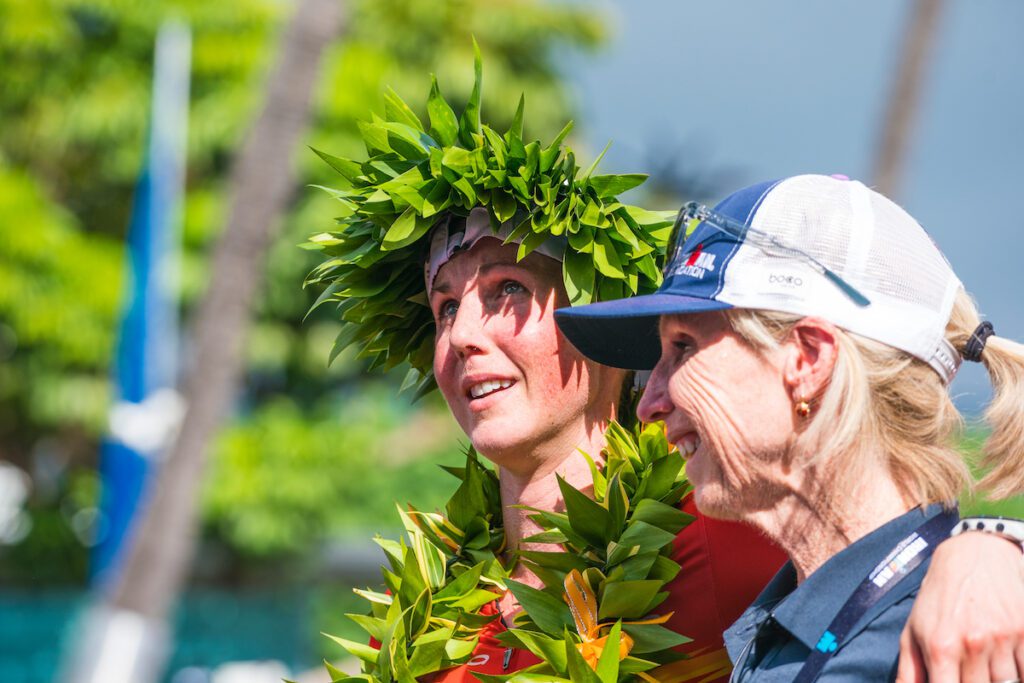
The Balancing Act
For everyone, managing a career and family is at times excruciating: the fear of missing the first time a child rolls over, takes a step, or sounds out a first word is omnipresent. It’s a fear Sodaro has dealt with acutely in the last year and a half. She feels it with every training and career decision.
“Is it worth it” permeates everything, said Sodaro, who, in every interview or social post, is sometimes uncomfortably up-front about facing the difficulties new motherhood paired with a return to elite racing. She has taught herself, during each decision point, to ask, “Am I showing up for Skylar in the way she deserves? Am I modeling the kind of woman I think she should aspire to be? Am I making her life better by what I’m doing?”
She need look no further than her own family for inspiration. Sodaro’s mother, Marci Snodgrass, balanced life with an infant and a toddler in pursuit of a medical degree in the early 80s. Saddened by the lack of female physicians, she decided to shift from her then-current career as an athletic director to medicine. She interviewed for med school at Michigan State University while she was eight months pregnant with Chelsea.
“I appreciate what was modeled for me,” said Sodaro, who adds that her father, Peter Sodaro, was a true co-parent for the family; the head cook and dishwasher who ferried the kids to dance lessons and soccer practice at a time when it was not so common to see a male partner visibly involved in day-to-day parenting.
Sodaro sees the parallels between her parents and her own young family. “It has empowered me to have my career ambitions and also start a family, and to count on a partner that wants to parent just as much as I do, and is fully supportive of both of those goals.”
The Switch
Sodaro met future-spouse Steve in college. Both were runners at UC Berkeley. On paper, according to Sodaro, Steve was the superstar athlete, a sub-four-minute miler and All-American steeplechaser. While his career took him in a different direction (he is now a firefighter), hers began to show promise. As a senior, she won a 10 km national championship and $12,000, which felt like a small fortune.
As a couple, the two decided to give Chelsea a year to train full-time as an elite runner while Steve worked three jobs to make ends meet. “When we look back on how long we struggled and barely scraped by, a lot of people thought we were crazy…and honestly, we did too,” she said.
The sacrifices began to pay off as Sodaro notched another 10 km championship, and first place at the USATF Indoor Championships at the 3 km distance in 2013, along with fifth at the 5 km at the national outdoor championships.
But, while successes accumulated, so did the injuries, resulting in setbacks, coaching changes and stress. Sodaro finished a deflating 19th place out of 22 at the 2016 Olympic trials for the 10,000-meters. After that disappointment, she contemplated switching to the marathon, but another Achilles flare-up left her despondent and unable to run.
During the lead up to the Rio Olympics, Sodaro had been following the Team USA tri team, which included runner-turned-triathlete Gwen Jorgenson. Husband Steve commented that Chelsea would be great at triathlon. Unable to run, Sodaro began to cross train, swimming and cycling with local groups in Flagstaff while the idea of making the switch began to solidify in her mind.
Sodaro reached out to coach Paolo Sousa of The Triathlon Squad, an elite group that included Greg Billington and Joe Maloy, two of the three male triathletes on Team USA in Rio. Within two months, Chelsea had moved with Steve to southern California to train with the team.
Related: Chelsea Sodaro calls for greater equality in sport
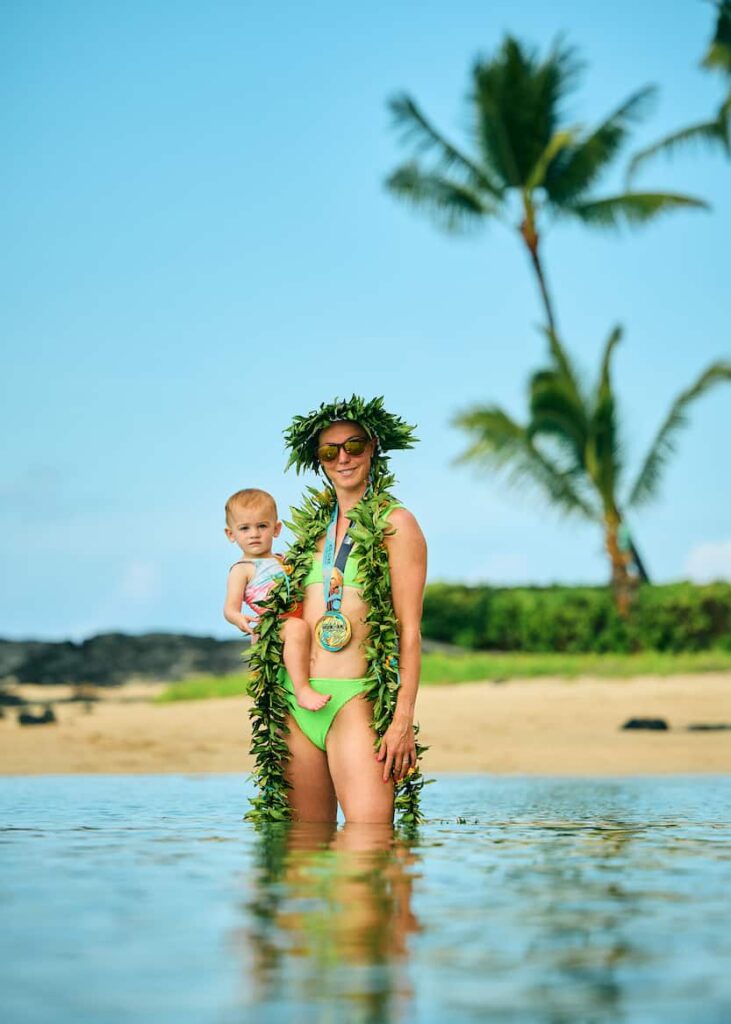
The COVID Baby
Sodaro began competing in draft-legal triathlon in 2017, with the Clermont Draft-Legal Challenge. She earned gold and silver in the elite-development races and earned her pro card. Three more podium finishes followed that season, and in June 2018, her first major win at the Huatulco ITU Triathlon World Cup.
Draft-legal racing is still mainly a European stronghold, and the international training camps and travel began to wear on Sodaro, who missed her husband and family. A switch to Ironman-focused triathlon followed, and she began working with Matt Dixon’s Purple Patch group. Her long course debut was the 2018 Ironman 70.3 Indian Wells, with a 4:14 finish good for first place.
2019 brought more 70.3 wins, at Augusta and Santa Rosa, as well as victory at the 2019 Ironman South American Championships. She finished fourth at the 70.3 Worlds in Nice that year.
With racing shut down in 2020 for the COVID pandemic, the Sodaro’s decided to start a family. Throughout her pregnancy, there was no doubt she would return to racing. “There was never a plan B.”
While Sodaro became pregnant prior to the new PTO maternity policy, she was thrilled to learn about it. It meant she would receive financial support, plus ranking protection, making a return to elite racing more straightforward.
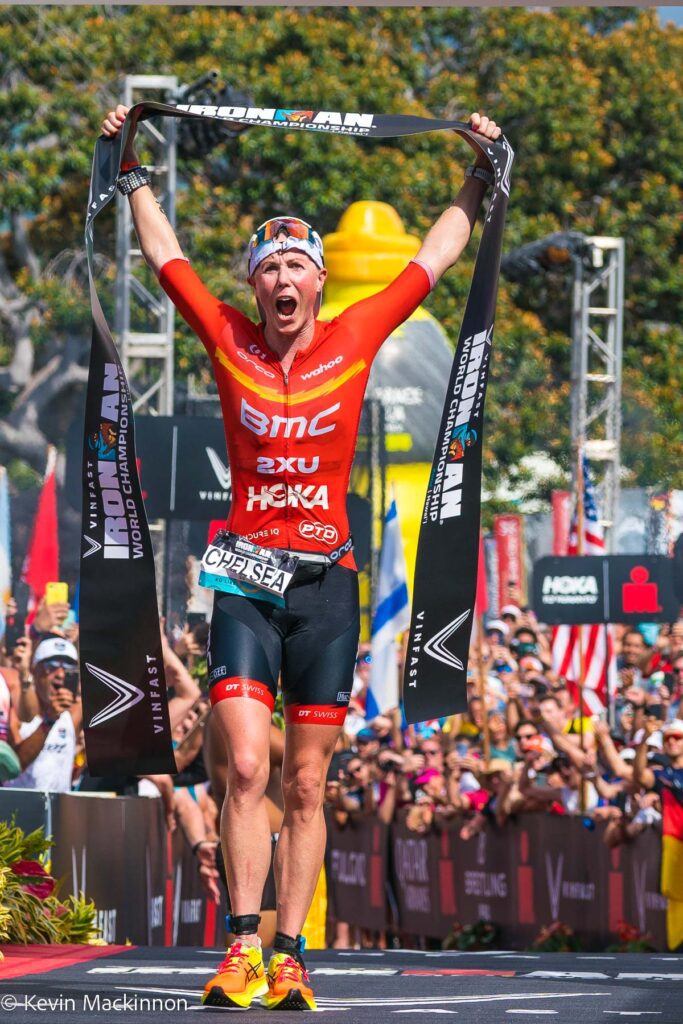
The Return
Sodaro has been raw and candid about her post-partum journey, battling depression and anxiety while chasing a goal to qualify for the Collins Cup, a goal she had made while still pregnant. By May 1, two months post-partum, she was back to 12-hour training weeks. Her 6th place finish at Ironman Boulder 70.3 was good enough to qualify for the Collins Cup. A stress injury in the fibula ended her 2021 season.
The stress of balancing a career as an elite athlete and motherhood was almost crippling. Consistency, said Sodaro, was almost impossible. Early into the 2022 season, she didn’t feel she was racing at her potential, short-changing both her career and her role as a parent. She was struggling emotionally, and it was hard to be away from Skylar at training camps.
“During my pregnancy and since I had Skylar, I’ve wanted to quit a number of times – it was just too much,” she said. “Steve had so much belief in me. He said ‘this is the hard part – we just need to endure and things will get better and easier. You would regret it if you walked away right now.’ People would be surprised by how seriously I contemplated quitting, even in the last six months leading up to Kona.”
A second-place finish at Ironman Hamburg turned the tide, and she felt that “something clicked.” She started to enjoy training and racing again and felt like Ironman was her distance.
She felt she was edging closer to her potential and motivated again. The PTO Canadian Open at Edmonton was a great confidence booster and a huge mental victory, with a third-place finish behind Ashleigh Gentle and Paula Findlay.
Related: Chelsea Sodaro wins Ironman World Championship in Kona debut
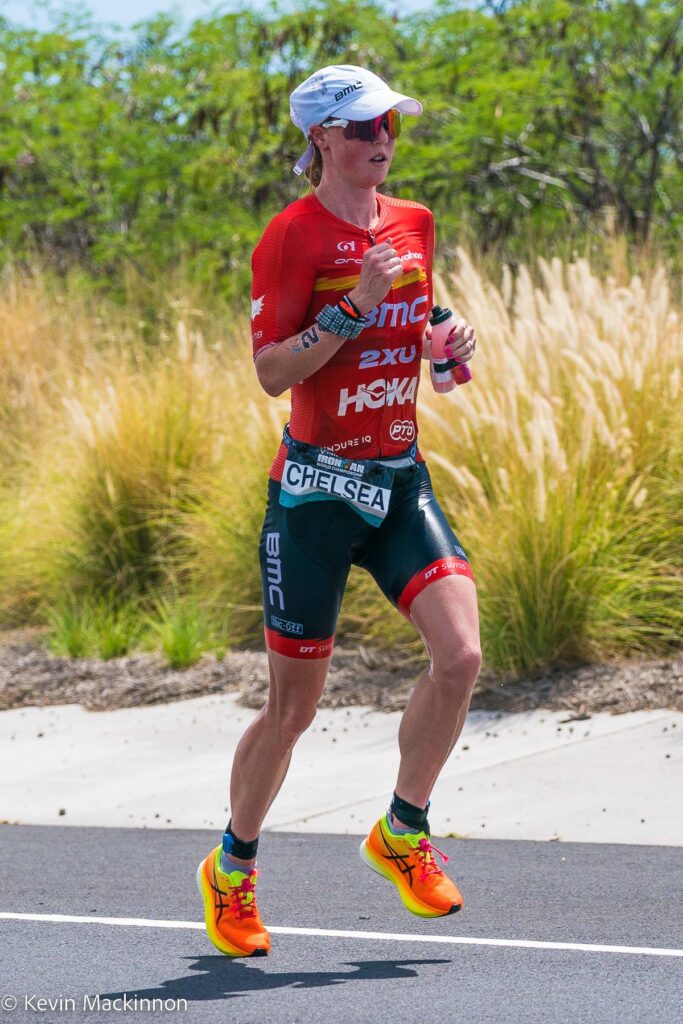
The PTO Policy
Sodaro was already several months pregnant when the PTO policy went into effect. Still, it afforded her a monthly income for seven months prior to her return to racing at Ironman Boulder 70.3 after giving birth to Skylar. Coming off a full season of no racing due to COVID, the cash support was a welcome bonus. But, more than the money, Sodaro says the policy shows that PTO supports female athletes throughout their careers. “It’s about representation, that the women’s side of the sport is here to stay. The investment is there, and there’s respect for what we’re trying to do.”
The PTO policy, which took effect in January 2021, guarantees athletes up to 15 months of paid maternity leave, start from pregnancy through six months post-partum. The amount of the benefit is calculated based on the athlete’s PTO ranking at the time of pregnancy, which is then used to determine the athlete’s annual bonus. That amount is divided by 12 to come up with a monthly benefit number.
Parallel to the financial support is a ranking freeze, which enables athletes to return to the sport close to where they left it in terms of PTO rank, which determines event qualification and bonus money.
Professional triathlete Rachel Joyce was part of the committee that developed the PTO policy. A parent herself, Joyce intimately understood the importance of both financial support and the ranking freeze. A three-time podium finisher in Kona (second in 2013, third in 2014, and second in 2015), Joyce lost her own Ironman ranking (there was no PTO at the time) after taking the 2016 season off to have her son, Archie. (Kona qualification is based on a points system, determined by finishes in Ironman-sanctioned races.)
With no ranking and a new baby, Joyce pushed herself to compete three full Ironman races in three months to earn enough points to qualify for the world championship. “It was awful, but that experience motivated me,” and Joyce was eager to help craft the PTO policy.
“At the very basis of the PTO was parity between men and women, and for us on the board, having a maternity policy was a priority,” Joyce continued. Also included in the policy is adoption leave and a shorter parental leave for men, to support them as new parents without fear of a rankings loss.
Joyce was thrilled to watch Sodaro return to racing, culminating with the world championship crown. “I did feel emotional. And Chelsea was REAL about how hard it was, and her moments of real doubt. That vulnerability is massively important, as it is the inner voice we are always facing.”
“Most of us had to wait until our careers had peaked to start a family,” Joyce said. “I love that we are going to see more women supported to re-enter the sport at a high level.”
Related: The Ironman world champion’s gear – Chelsea Sodaro
The Road Ahead
For now, Sodaro looks forward to focusing on motherhood for the next month or two before training begins in earnest for her 2023 season.
Where does she hope to see women’s sport in 10 years? Or when Skylar is potentially a young athlete herself?
“My dream is that when she is of a professional age, and hopefully sooner, that maternity leave in contracts will be a given,” Sodaro said. “That she won’t need to be telling this story or talking about these things because they will be totally normal. It’s a privilege for me to have the platform to talk about this, but if I didn’t need to, I wouldn’t.”
“How can I support you” is what every new mom wants to hear, comment both Sodaro and Rachel Joyce. With PTO’s maternity policy and a growing number of elite mom-triathletes currently in the sport, the future looks more equitable, and more exciting, than ever.
